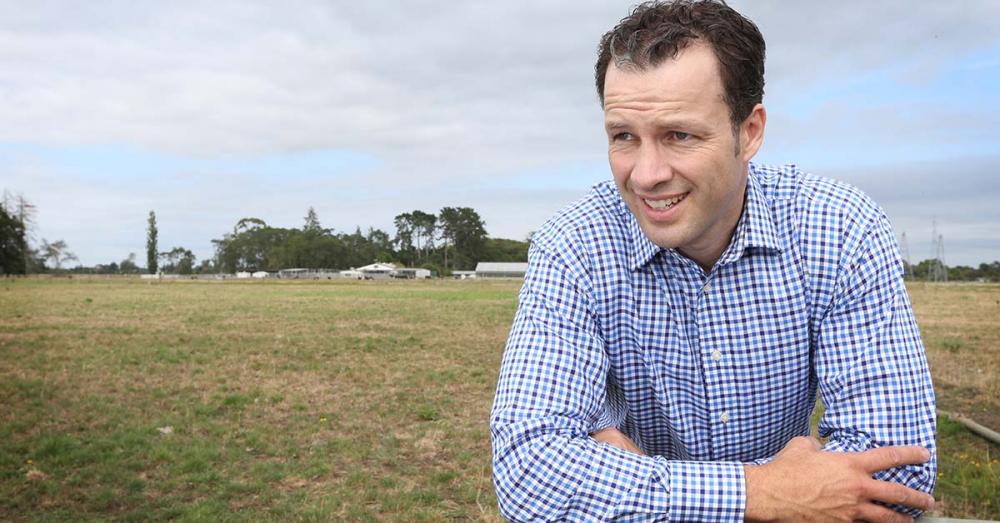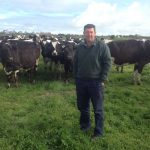
The commission suggests a 15% reduction in farmed livestock numbers below 2018 levels is possible without compromising production due to improved animal performance, enabling biogenic methane targets to be met without new technology.
It claims farmers can run fewer cows on less land yet achieve the same or more milksolids per cow, generating less methane per kilogram of milksolids.
DairyNZ disagrees.
Chief executive Tim Mackle says there is a linear connection between feed consumed and methane, and to maintain production off fewer animals requires increasing feed and therefore emissions.
Mackle says pursuing this farm system will make 34% of farms financially worse off, milk production will fall between 7% and 13%, and GDP will take a hit of between 0.98% and 1.4%.
This equates to an annual loss of between $1665 and $2393 per household.
“We believe the commission’s path for agriculture is not just pushing towards but is beyond the limit of what we, as sectoral experts, are confident can be delivered,” DairyNZ’s submission said.
“This is because the assumptions made to underpin this assessment are overstated or cannot be verified.”
It also claims the commission is overstating the impact of genetic gain, the scalability of mitigation and warns that historic milk flow production may not be the same in the future.
The commission’s methane target equates to a 13.2% reduction in biogenic methane emissions below 2017 levels by 2030, a 32% increase on Zero Carbon Act 2030 target of 10% reduction below 2018 levels.
Mackle says new technology is needed to achieve substantial methane reductions.
“Absent of new technologies or research that breaks this linear relationship, in order to reduce enteric methane, means we would need to find ways to reduce the total quantum of feed eaten by ruminant livestock,” Mackle said.
He says changes such as fewer cows run per hectare tend to interact with other systems and are not scalable across the country.
“Most changes are not linear and have a “ceiling” or threshold point to their effectiveness,” he said.
“As you are working with a complex biological system where many of the key drivers are interrelated, the majority of these changes are not stackable.”
Similarly, DairyNZ’s submission disputes the commission’s claim that production per cow can be increased, saying annual milksolid growth in the past decade of about 1.4%, has come from farm conversions and greater use of supplementary feed.
That is unlikely to be repeated as the National Policy Statement for Freshwater effectively ends further intensification and dairy conversions.
In theory, lower stocking rates can result in greater individual cow intake and therefore greater cow production, but DairyNZ quotes studies that dispute the assumption total dairy production will be maintained.
A Waikato study found that reducing stocking rates (from 3.2 cows/ha to 2.6 cows/ha) resulted in an 18.5% increase in milksolids per cow, but a 3.7% decrease in total MS/ha and 13.4% decline in profit.
The drop in total feed eaten/ha, a key driver of methane, was 7%, and the decline of modelled greenhouse gas emissions was 16%/kg carbon dioxide equivalent/ha.
“This result showed that even in a well-controlled research environment, with cows of greater genetic merit, maintaining production and profit at previous levels was not achieved,” he said.
DairyNZ’s submission says methane production is directly linked to dry matter intake and in the absence of new technology, reduced methane production requires a reduction in total dry matter intake.
“This will be achieved by removing the least profitable feed in the system (supplementary feed),” DairyNZ said.
“For this, milksolids per cow will actually reduce, even with a reduction in stocking rate.”
DairyNZ claims the benefits of genetic gain are also overstated.
Research shows that in pastoral systems there is minimal difference in actual feed intake between low and high genetic merit animals.
At normal rates of genetic gain, feed demand per cow increases by 0.4% per year.
“In theory, more energy is partitioned to milk production, rather than maintenance, but an emphasis on per cow production leads to bigger cows and thus greater maintenance requirements,” he said.
NZ has the lowest milk carbon footprint in the world and DairyNZ is focused on producing the most sustainable milk.
“Each farm has bespoke options to reduce emissions. Not every mitigation practice available today can be implemented on every farm at once,” DairyNZ said.
DairyNZ is holding Step Change seminars to assist dairy farmers reduce their methane and nitrogen footprint while remaining profitable.
Mackle says farmers need to know their greenhouse gas emissions and from there can determine how to reduce those emissions within financial limits.
























